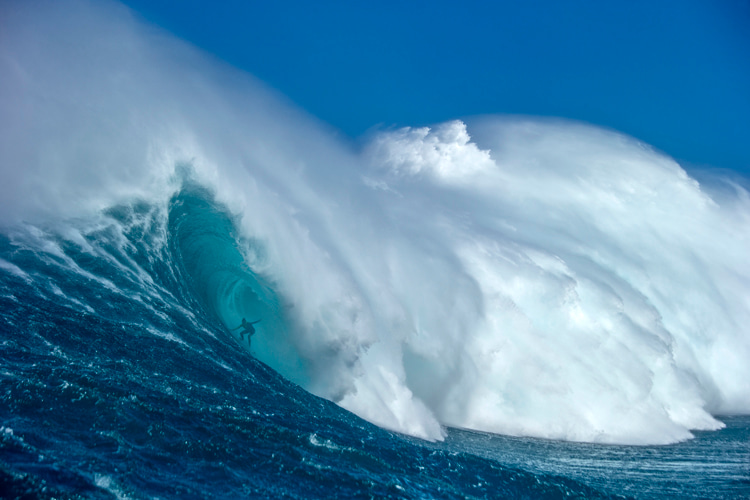
Mark Healey is among the most respected voices in big wave surfing and extreme ocean safety. He’s ridden the largest mountains, set up and prepped jet skis for historical wave-riding events, and helped rescue struggling surfers.
The waterman from the North Shore of Oahu has survived the toughest wipeouts an athlete could go through and learned what works best when oxygen is a matter of life or death.
Healey shared some of his favorite self-rescue and lifesaving techniques on Jamie O’Brien and Mason Ho’s podcast, especially focusing on getting pounded on waves of consequence and multiple-wave hold-downs.
Here’s an organized overview of Healey’s tips that you could use to spare oxygen when you really need it.
After all, you’ll need more than just techniques. You’ll also need the right mindset to address those difficult moments.
The idea of “controlling” a wipeout is interesting and actually quite smart. According to Mark Healey, here’s what you should have in mind whenever you go down.

1. Muscle Tension and Body Control
When I take a big wipeout, I’m really only putting as much tension in my muscles as I need to – just enough to keep things from flying out of socket.
I’m not going full ragdoll, but I’m not tensing up unnecessarily either. It’s a balance. The key is controlled relaxation.
2. Letting the Ocean Do Its Thing First
I never start scratching for the surface right away. I wait until I feel that the wave is done with me – when I start to feel that lift, like I’m naturally coming up.
That’s when I might do a couple of strokes. Until then, I’m going with the momentum that’s already been created.
3. Gauging Depth by Body Awareness
I don’t look around underwater. I gauge how deep I am by the pressure on my ears and chest.
I’ve been free diving my whole life, so I’ve developed a pretty good sense of where I am in the water.
I don’t expend any energy unless I’m sure the wave is letting me up.

4. Breathing Technique Before a Wipeout
People always ask if I pack in a big breath before a hold-down. I don’t. That’s a common mistake. Free divers do that because once they’re 30 feet (nine meters) down, the air compresses.
But in surfing, we’re usually not going deep enough for that air to compress. So, packing your lungs full means your chest is stretched to the max.
There’s no suspension left, and when you take an impact like that, you bottom out hard.
Also, holding that much air takes a lot of effort. Your diaphragm is working overtime, and that’s the part of your body that sends panic signals when it gets fatigued.
I just take a comfortable breath in – enough to stay calm and efficient.
5. The Role of Flotation
This is where flotation comes in – having something on you, like a wetsuit or an inflatable life vest, helps you start floating up once the wave’s done.
It also gives you peace of mind. Knowing you’ll rise eventually helps you stay calm, especially when you’re stuck in a two-wave hold-down.
6. The Mental Game
That’s the trickiest part about surfing big waves: the psychology of it.
You’re underwater, it’s dark, disorienting, claustrophobic, and the next wave might be coming fast. You start wondering:
“Do I burn the energy trying to reach the surface – maybe just in time to get slammed again?”
“Or do I stay down, conserve energy, and accept the two-wave hold-down?”
With flotation, you trust that you’ll come up eventually. That mental edge is huge.
7. Why It Feels So Hard – Even If It Isn’t That Long
The truth is, you’re probably not underwater for that long. Most people can physically hold their breath that long.
But it’s the psychology of not knowing when you’ll breathe again that’s hard to get past.
That’s why techniques like waterboarding are effective in interrogation – it’s not the time, it’s the uncertainty and loss of control.
When you feel like you’re about to get a breath, part of you starts letting go of that intense, focused, “samurai state of mind”… and then – bam! – another wave hits.
That transition, mentally, can be brutal.
Words by Luís MP | Founder of SurferToday.com


Leave a Reply